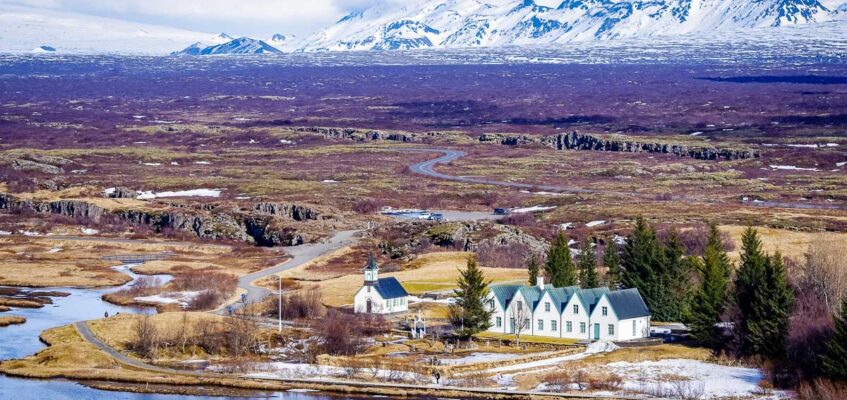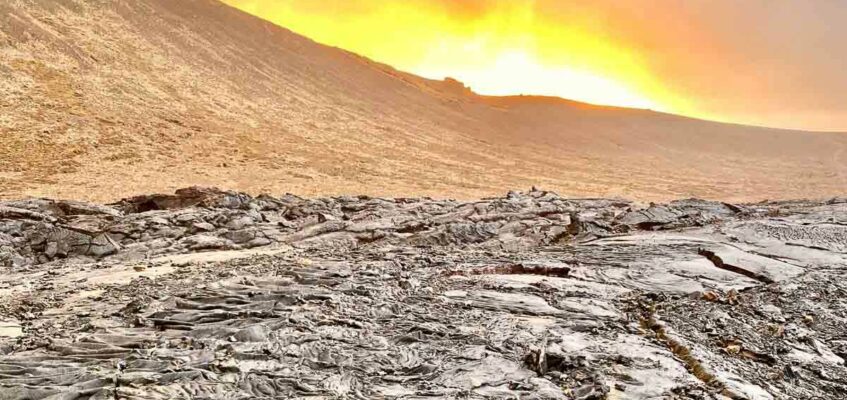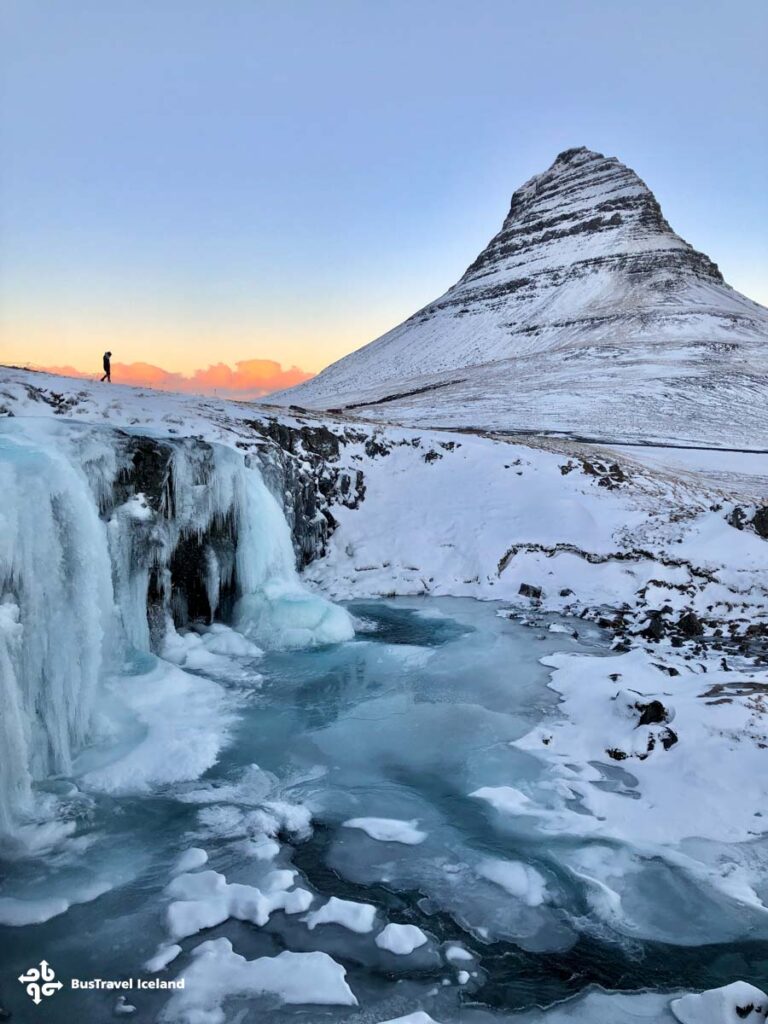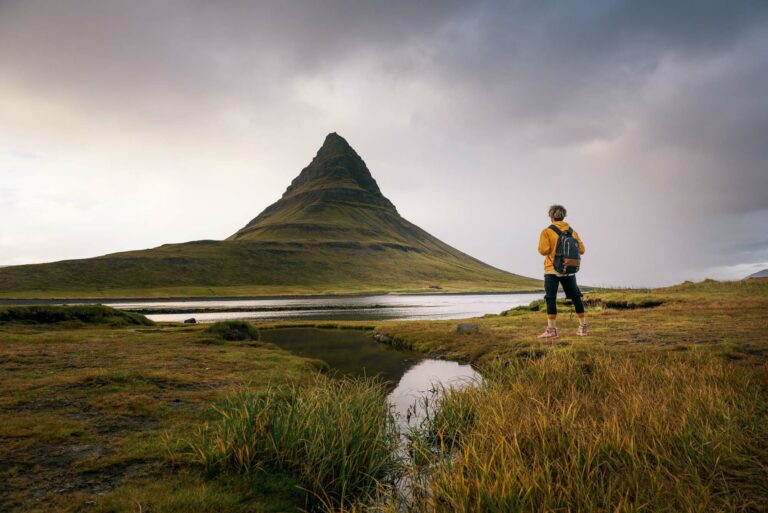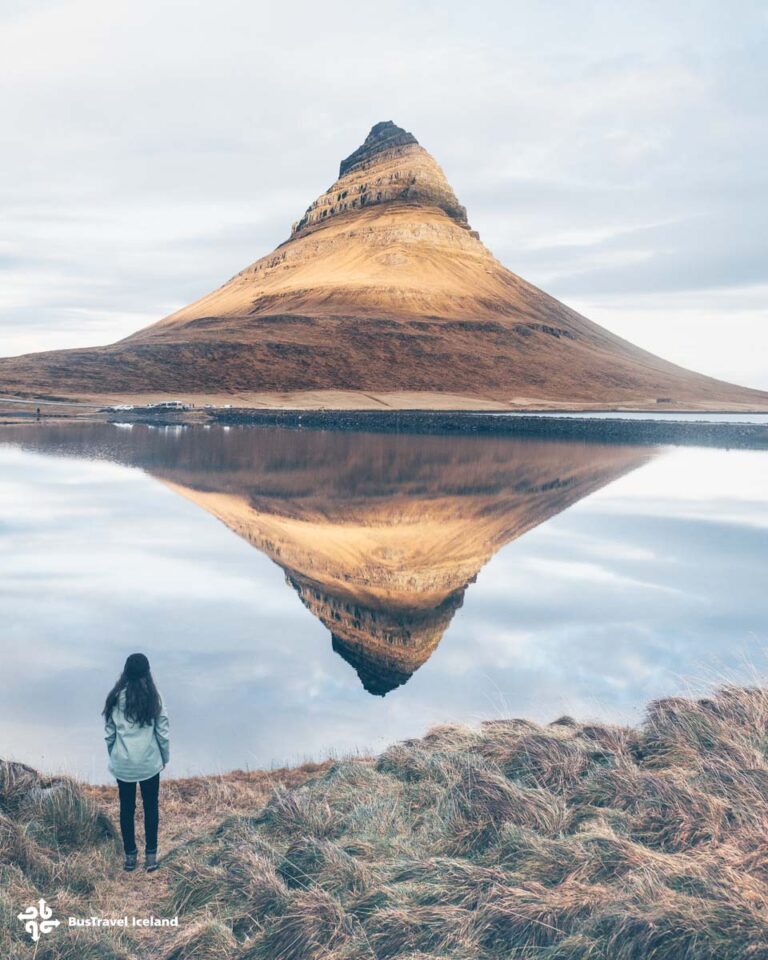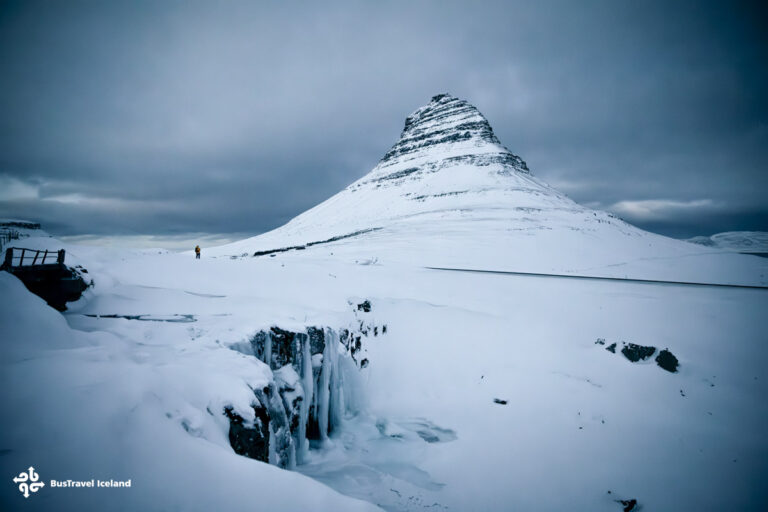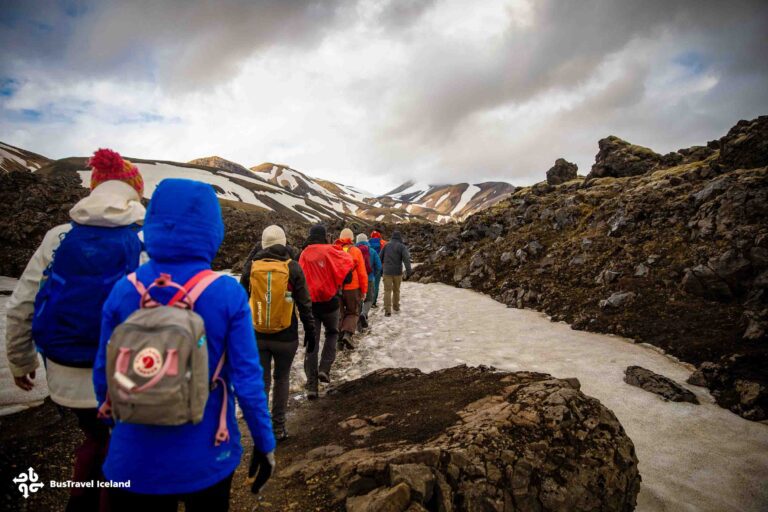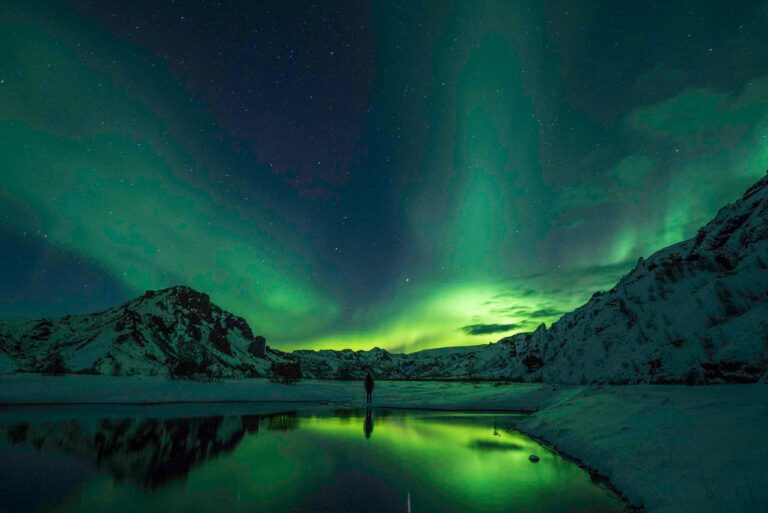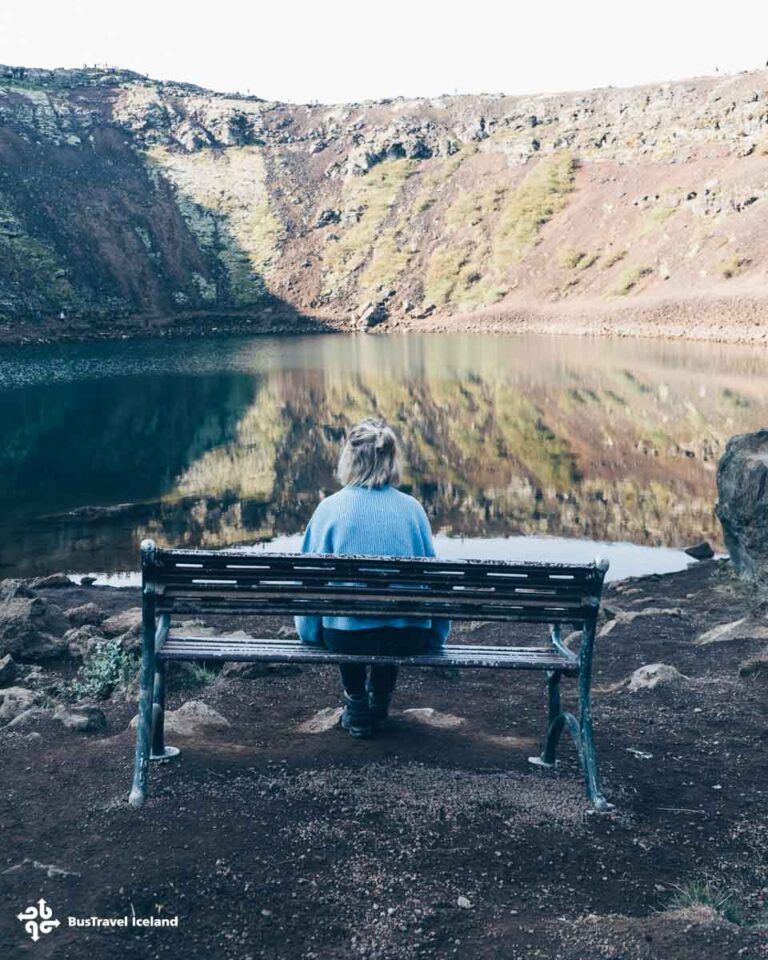The Iconic Búðir Black Church on the Snaefellsnes Peninsula
- Snaefellsnes
- 12 Jan 2024
In this immersive travel guide, let’s discover the captivating Búðakirkja, the iconic black church of Búðir, located in the stunning landscapes of Iceland's Snæfellsnes Peninsula.
![[Photo credit to Danni Arndt]](https://bustravel.is/wp-content/uploads/2024/01/Budir-black-church-Snaefellsnes-Peninsula-7971.jpg)
Where is Budir Black Church Located
Budir black church is located on the southern side of Snaefellsnes Peninsula, its closest popular sightseeing spots are Arnarstapi fishing village and Ytri Tunga beach.
As you approach Búðakirkja, its striking black hue immediately captures your attention, blending charmingly with the surrounding landscapes of the Snæfellsnes Peninsula, a region fondly known as ‘Iceland in Miniature’ for its diverse natural wonders. The church is set against the backdrop of the imposing Snæfellsjökull Glacier to the west, its grand ice cap a prominent sight from the church’s grounds. To the north, the vast Faxaflói Bay stretches out, echoing the peninsula’s deep maritime heritage.

Búðakirkja’s Surroundings
Búðahraun Lava Field
Directly encompassing the church, the Lava Field of Búðahraun presents a stark, black expanse of rugged lava, testament to Iceland’s volcanic activity. These fields house a protected nature reserve, home to unique plant life and bird species. Within these fields lies the volcanic crater Búðaklettur, an iconic rocky outcrop that’s a stark feature of the landscape. On its south-west side, the crater features an opening that leads to the entrance of the 382-meter long Búðahellir Cave. While here, you’ll be treated to some of the most impressive views, showcasing a perfect blend of Iceland’s unique landscapes and stunning shoreline vistas.

Nearby Landmarks
Just a short distance from the Búðakirkja, the Hótel Búðir offers hospitality against a backdrop of stunning nature, while the nearby Búðahellir Cave provides a glimpse into the geological complexity of the lava fields and black lava rocks. Not far to the northeast, the town of Ólafsvík serves as a cultural companion to the natural splendor of the region.
Why Budir Black Church is So Special
Exploring the Búðir Black Church on Iceland’s Snæfellsnes Peninsula brings you closer to understanding the region’s religious and architectural heritage. From its initial establishment to its modern-day significance, you can appreciate the profound impact this church has had on both the local community and visitors from around the world.

Origins and Early History
The Black Church of Búðir, known as Búðakirkja, has its foundations as a wooden church granted by Danish King Christian VIII. Our records indicate that the first church at Búðir was constructed in 1703. The harsh Icelandic elements reduced the original structure to a small turf chapel over time, to make it fit a more resilient building to serve the spiritual needs of the local population.

Reconstruction and Preservation
In 1848, the present church you now see was erected after the original Danish design structure fell into disrepair. The construction of a new house began. Búðakirkja stands as one of the few black wooden churches in Iceland. The distinctive color results from the pitch-tar coating used to protect it from the harsh climate. The National Museum of Iceland has played a crucial role in the preservation efforts, ensuring that this historical church remains a testament to Iceland’s architectural and cultural resilience.

Spiritual and Community Role
For centuries, the black church has served a significant function in the spiritual and community life of the locals. Sited near the captivating Snæfellsjökull glacier, Búðakirkja has been a place of solace and reflection for generations, heavily woven into the fabric of Búðir and the Snæfellsnes Peninsula. Even today, our community continues to gather here, upholding the traditions that have been passed down through the years.
Ceremonial Functions
Búðakirkja’s unique location and stark contrast with its surroundings have made it an ideal spot for various ceremonies. Notably, it is a cherished venue for weddings and christenings. The historical graveyard adjacent to the church adds to its sacred atmosphere, making it a profound place for both joyous celebrations and solemn remembrances. It’s no wonder that visitors from all over are drawn to witness and participate in the ceremonial functions held in this iconic black church.

Budir Black Church’s Unique Appearance
The architectural elegance of Búðakirkja lies in its minimalistic design and remarkable color. As you explore this iconic structure, you’ll appreciate how its features have made it a magnetic site for visitors, especially photographers who are captivated by its stark contrast to the surrounding landscape.
Budir’s Design and Construction
Búðakirkja, also known as the black church of Búðir, is a wooden structure that has timeless charm. The church was originally established in 1703, as a turf chapel was built in the middle of Iceland’s vastness and wilderness.
The current building dates back to 1848. Constructed largely out of wood, it is a representation of the simplistic style of early Icelandic architecture. The church’s remediation over time has maintained its original form, ensuring the preservation of its heritage.

Unique Attributes
The black exterior of the church, set against the vast, open sky and nearby vast lava fields, offers an isolated and dramatic image, making Búðakirkja a popular subject for photographers. The black paint utilized on the church is pitch, which is similar to that used on ships, underscoring the unique attributes of this building. Situated in a remote area, its isolated location adds to the tranquility that surrounds it. Despite being a turf chapel at its inception, the church now stands out as a cultural symbol, embodying both historical significance and architectural simplicity.
How To Get To Budir Black Church
The region surrounding Búðir Black Church is a favored spot for both locals and tourists. This small hamlet, nestled on the westernmost tip of the peninsula, is home to the charming Búðir church and the inviting Búðir hotel.Those visiting the Snæfellsnes Peninsula are often mesmerized by the church’s striking contrast against the lush Icelandic landscape. For many photographers and Instagram enthusiasts, capturing the solitary beauty of Búðakirkja against the backdrop of nature is a must. The popularity of the site invites a consistent stream of guests throughout the year.
- Accessibility to Búðakirkja is relatively straightforward, which encourages people to include it in their travel itineraries. It takes about 2.5 hours to get to Budir from Reykjavik by car, and this spot is often included in the Snaefellsnes Peninsula day tour itinerary.
- Nearby, countryside hotels in Iceland are available. Hótel Búðir offers accommodation, allowing visitors to experience the region’s charm over an extended stay.

The Protection of the Historic Church
As iconic landmarks go, the Búðir black church, or Búðakirkja, located on the Snæfellsnes Peninsula, is a prominent attraction known for its stark beauty and dramatic surroundings. The allure of this site draws a significant number of tourists, making it vital to balance visitation with preservation efforts to maintain its pristine condition.
Conservation Efforts
The importance of preservation of Búðakirkja not just as a tourist destination but also as a part of the Icelandic cultural and natural heritage. Efforts to preserve the church and its surroundings are thus aligned with the objectives of the local nature reserve.
- Informational signage provided at the site educates visitors on the significance of the area and the importance of minimizing their impact on the environment.
- Regulations are in place to ensure that nature is not disturbed by human activities, and foot traffic is directed along specific pathways to avoid degradation of the surrounding nature.
By fostering a sense of respect among tourists for the natural splendor and cultural importance of Búðakirkja, you and I can ensure the continued enjoyment and conservation of this treasured site for generations to come.
Budir’s Interesting Stories and Anecdotes
Búðir and its iconic black church have been the epicenter of many local tales and have drawn notable figures through the centuries. These narratives not only enchant visitors but also embody the rich history and culture surrounding this unique location.
Local Legends
Steinunn Sveinsdóttir, a notable figure in Icelandic folklore, is said to be intertwined with the narrative of Búðir. Sveinsdóttir, who lived in the 18th century, is known for her daring escape from attackers by crossing a treacherous lava field which led to Búðahellir cave, a site near the church linked with tales of elves and hidden people.
Búðir Black Church: According to legend, the black hue of the church was chosen to stand out against the snow, serving as a beacon for those lost in the harsh Icelandic winter.
Notable Events and Visitors
The black church has witnessed numerous events that have shaped its historical significance.
- Danish King Christian VIII: In 1836, the Danish monarch visited Búðir, an event that signifies the church’s importance beyond its religious function.
Events: The church holds cultural prominence for hosting various ceremonies that are intrinsic to the life fabric of the local community, including weddings that are marked by storytelling and the celebration of heritage.
Through the years, Búðir black church has retained its aura of mystique, standing resilient against the backdrop of Snæfellsnes Peninsula’s harsh landscapes and generating stories that continue to resonate with those who visit.

